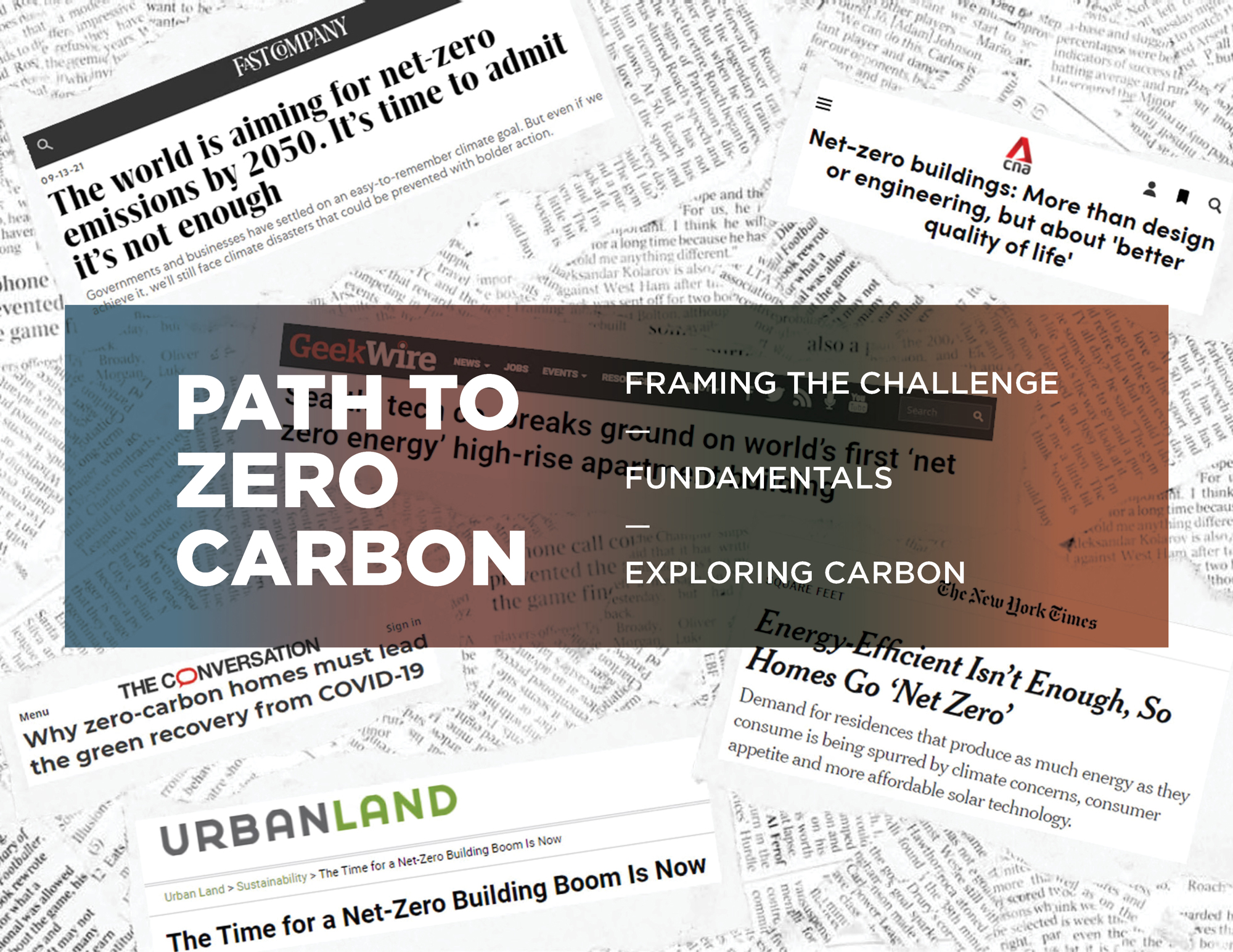#pathtozerocarbon, #sustainability
Path to Zero Carbon Series

Our Path To Zero Carbon Series explores research and solutions for one of the most significant challenges of the 21st century. Addressing the climate crisis requires the buildings industry to reach carbon neutral design and construction across all projects. Our industry is responsible for roughly half of global warming, so our actions to reduce these emissions have a massive impact.
With help from many collaborators, LMN is launching this series to research, summarize, and prioritize the most important actions we can take across all emissions sources on projects within the built environment.
The team has organized the series into 4 sections:
- Framing the Challenge considers our overall impact on our environment, resilience, and equity; our responsibility for these impacts and how they impact our clients carbon emissions disclosures; and the expanding scope of carbon emissions beyond just energy and structural embodied carbon.
- Fundamentals posts cover the science, policy, and basic research that provides context for climate action, including how greenhouse gases warm the planet, the time value of carbon, how the electricity grid is transforming, and the challenges of understanding and procuring carbon offsets.
- Exploring Carbon provides research on building-scale tools, methods, and strategies to understand and reduce emissions, from whole-building reuse to emerging research on embodied carbon and the circular economy.
- Conclusions + Process wraps up the series, including revising LMN’s Sustainable Action Plan and strategizing a process to reduce and then eliminate emissions across our projects.
The series is an honest exploration of a very near-term and critical challenge, in the spirit of failing forward, enabled by a culture of sharing among sustainability professionals. Goals include identifying resources and robust tools to calculate and reduce carbon emissions where they exist; to provide actionable methods where tools do not exist; and to provide questions and links to studies where no tools or methods exist.
Framing the Challenge
01 – An Honest Conversation About Zero Carbon
02 – Who’s Responsible for Carbon Emissions, Anyway?
03 – Toward Zero Carbon Architecture
Fundamentals
04 – The Science of Global Warming
06 – Buildings, Energy Use + Carbon
08 – Carbon Offsets, Sequestration + Honesty
Exploring Carbon
09 – Circular Economy + Products
11 – Structure: Steel, Concrete + Wood
12 – Envelopes – What Does High Performance Mean?
13 – Operational Carbon: Design + Process
14 – MEP, Refrigerants, Equipment + Carbon
15 – Interiors, Cyclical Renovations + Carbon
16 – Beyond the Building: Landscape, Parking + Transportation